ICT211 Database Design Task 2 Report: ER Diagram & Schema
VerifiedAdded on 2020/04/01
|6
|689
|49
Report
AI Summary
This report details the database design for a system, likely related to animal care or wildlife management, based on the provided relational schema and attribute data types. The design includes entities such as Breed, CauseOfAffliction, DiagnosisAetiology, CarerGroups, Carers, CouncilArea, OtherContacts, Patient, DNASamples, Accession, and Treatment, each with specific attributes and data types. Primary and foreign keys are identified to establish relationships between tables. The report also addresses database normalization, emphasizing the importance of organizing data effectively for easy access and management. Assumptions made during the design process are outlined, reflecting considerations such as carer group specializations, patient levels, and DNA report timings. References to Adrienne Watt's work on functional dependencies and Cinergix Pty Ltd.'s guide to ER diagrams are included, demonstrating a theoretical foundation for the design. This report offers a comprehensive overview of the database structure and the principles applied during its creation.
1 out of 6
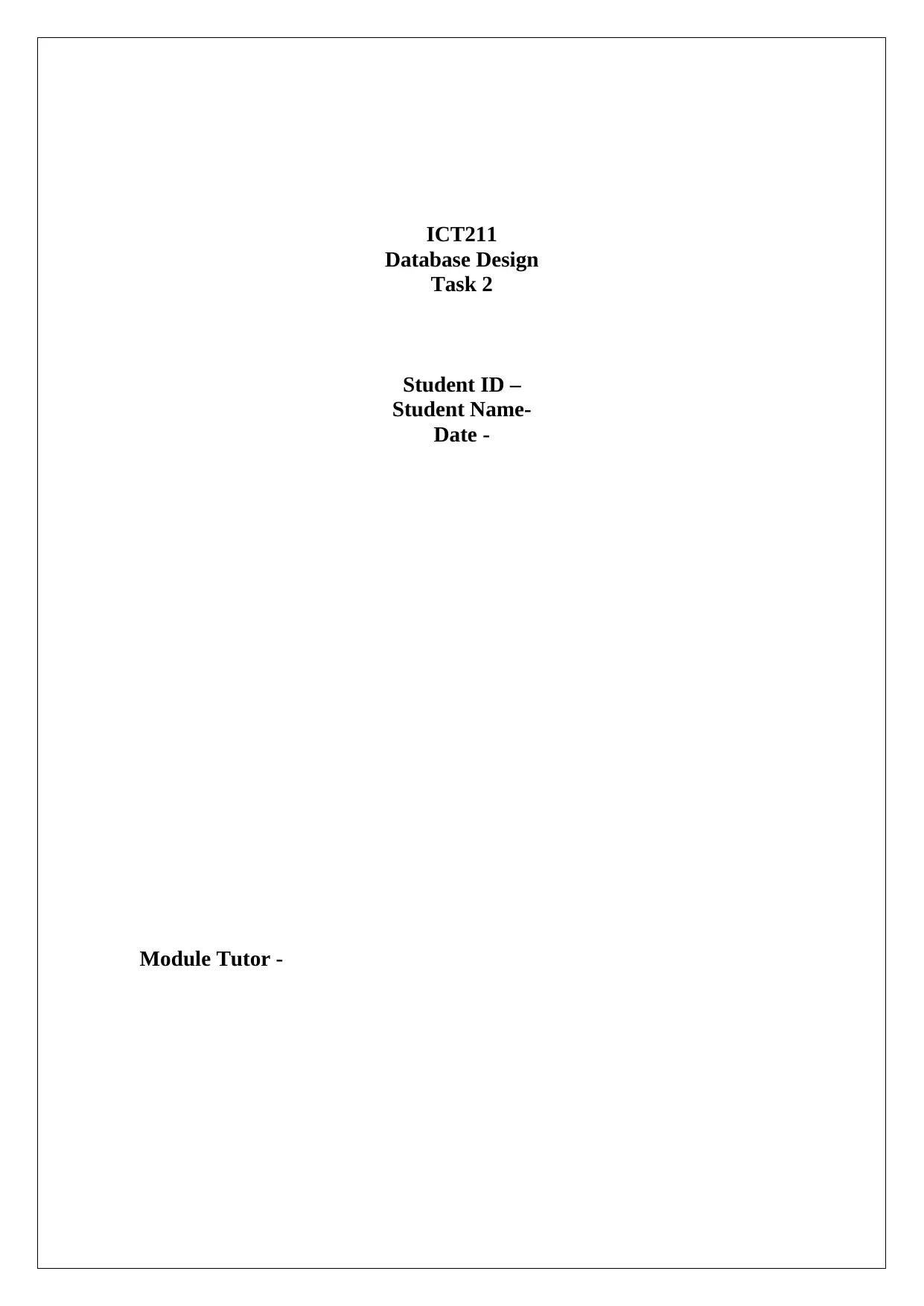
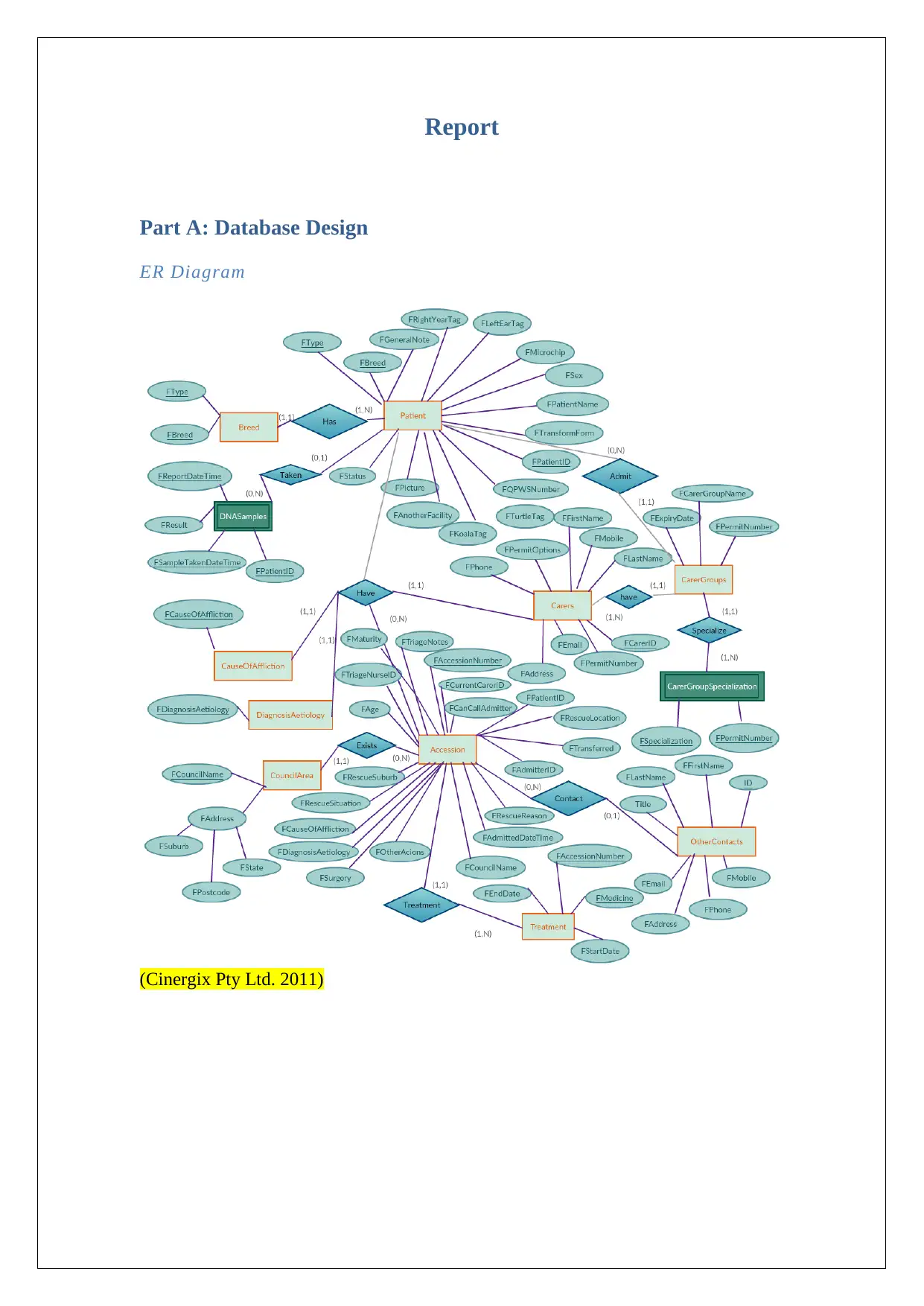
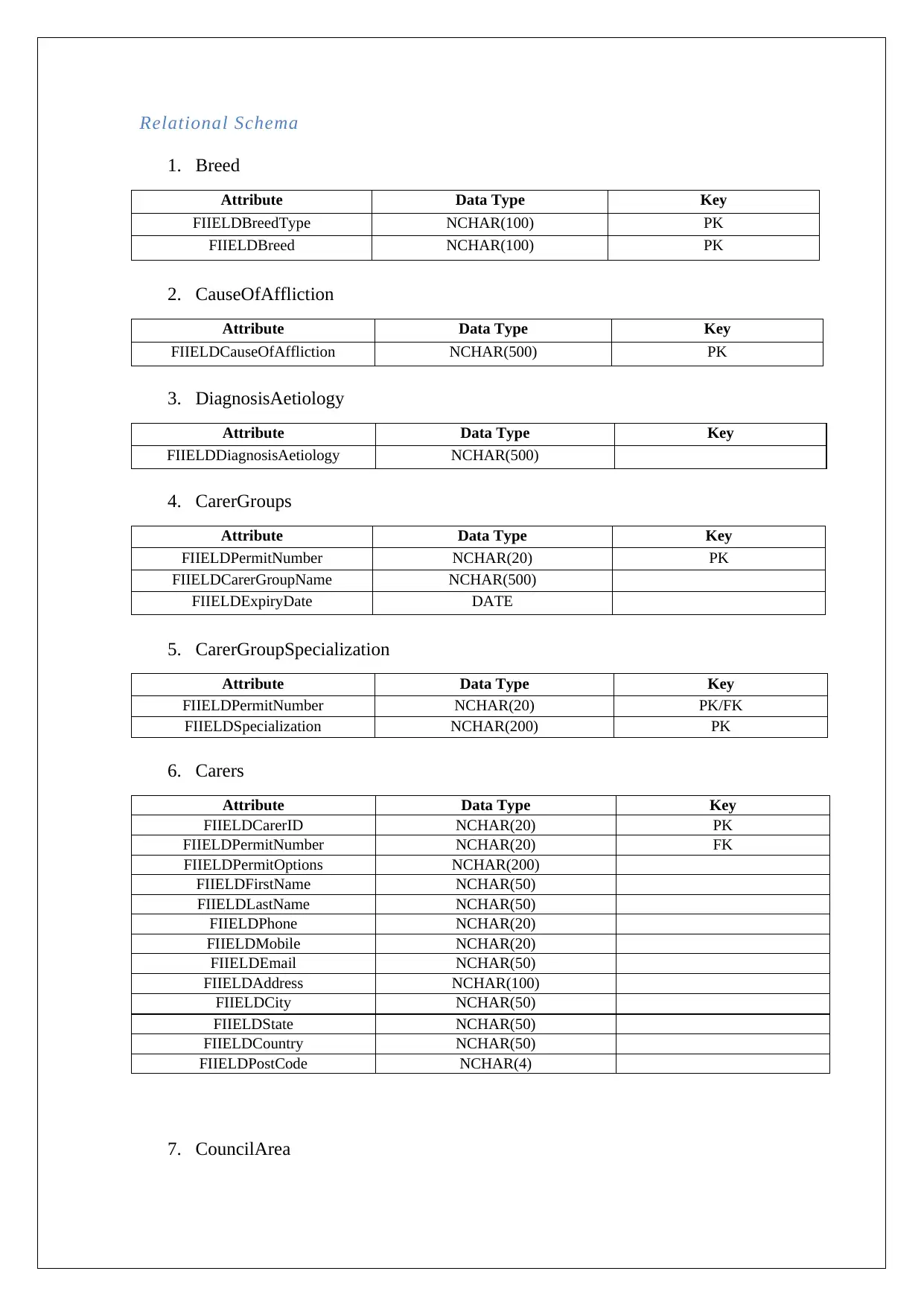

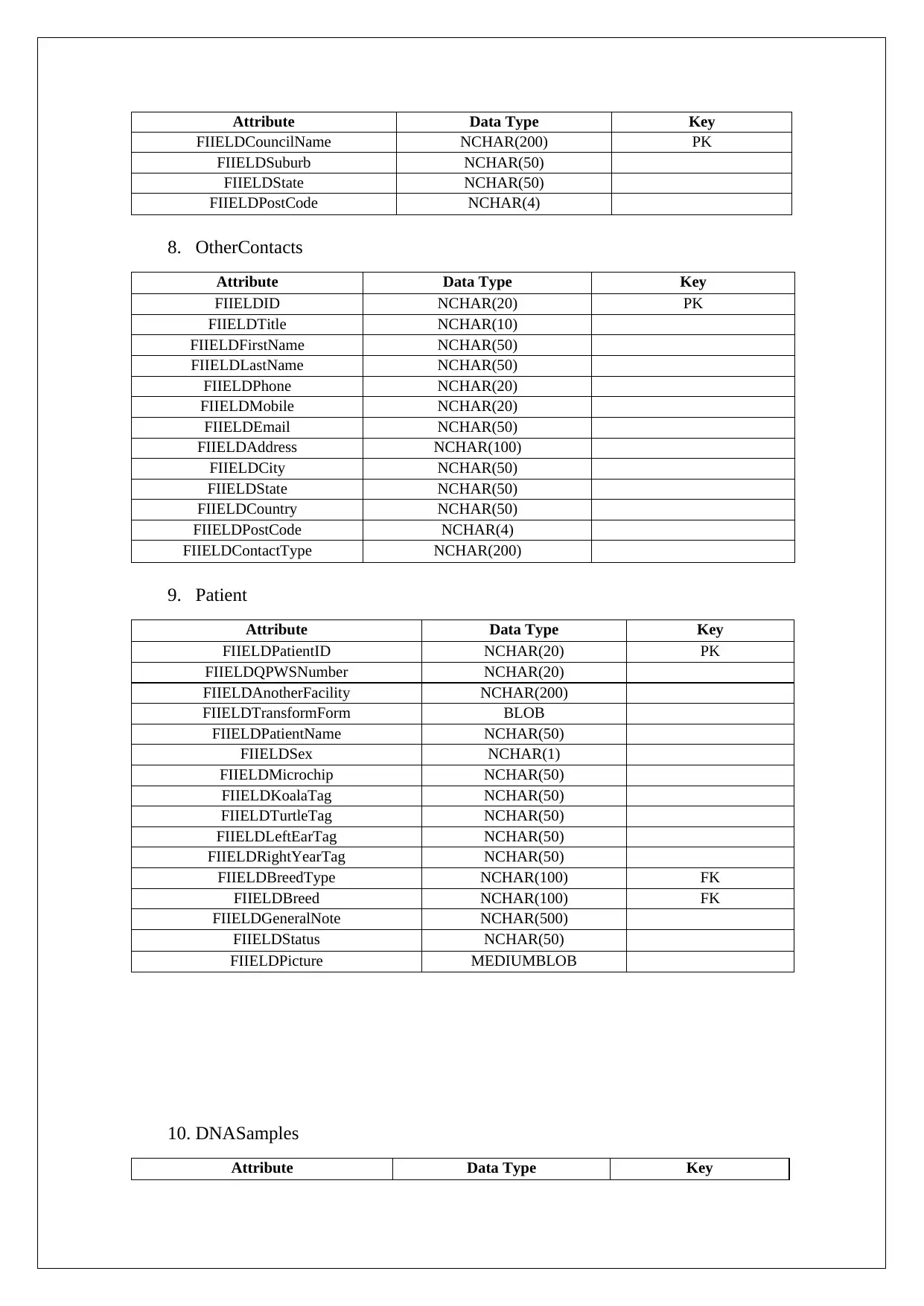
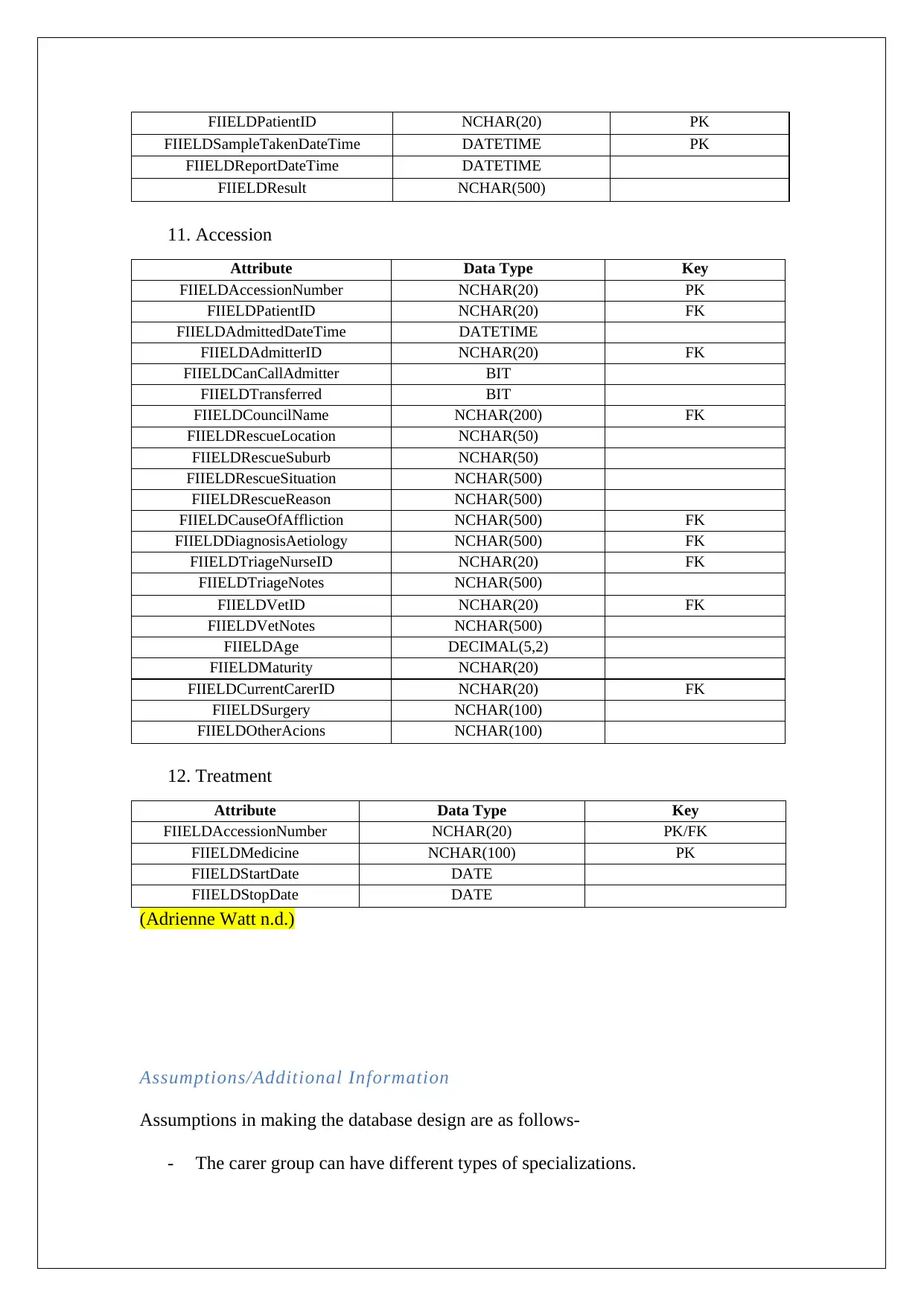
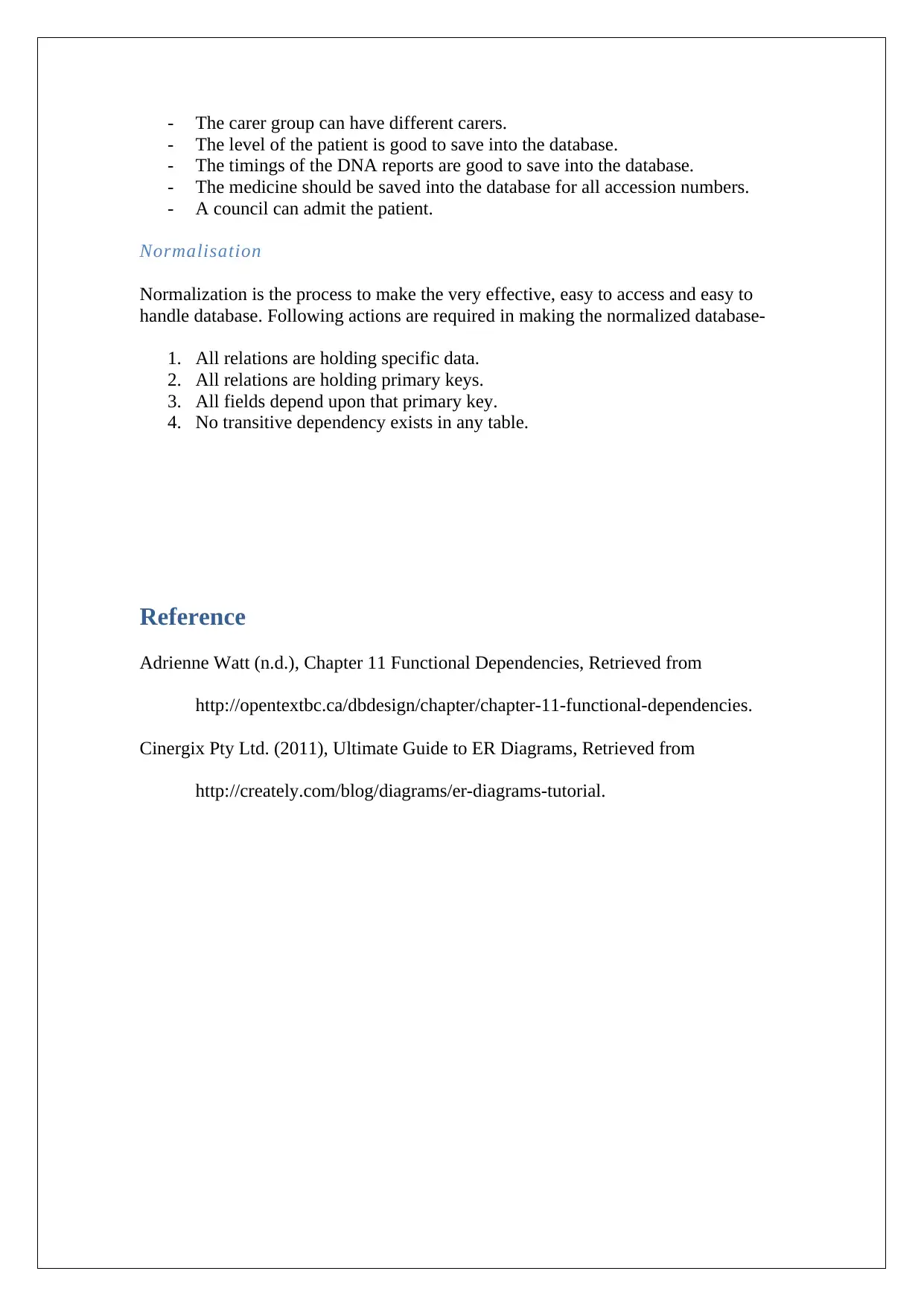






![[object Object]](/_next/static/media/star-bottom.7253800d.svg)